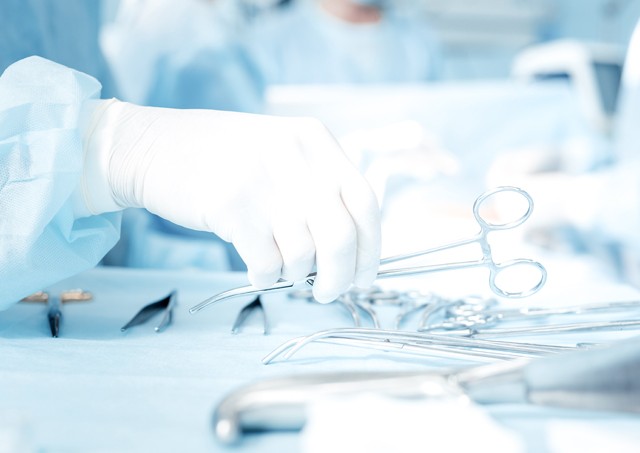
Others in the field of ENT
Upper lip frenulum plastic surgery
Frenulum of the upper lip is a vertical fold of the mucous membrane in the shape of a triangle, the center line extending from the inner surface of the lip to the outer surface of the alveolar process, attached to it in the range of 4-6 mm above the interdental papillae. Oversized, low-trailer frenulum of the upper lip can be treated surgically for orthodontic, periodontal, prosthetic and aesthetic.
Tongue frenulum plastic surgery
Frenulum a soft, fibrous creation, covered with mucous membrane, which connects the center line of the lower surface of the tooth to the bottom of the oral cavity and is visible after lifting the tip of the tongue against the palate. Too short frenulum, sublingual limits the movements of the tongue from side to side, forward, resulting in the inability to touch the tip of his tongue to the dental arches. Too short frenulum may hinder the formation of the correct tone sounds s, f, cz, dż and r sounds. First, it is recommended that appropriate exercise, which carries speech. If, however, this would not be satisfactory and the child still is not able to speak properly sounds, performed undercut frenulum.
DCR
In order to moisturize and clean the eyeballs, the tear gland located in the lateral part of the upper eyelid constantly produces tears. These tears flow through the eye to the medial part. Here they are collected by tear ducts (upper and lower). The ducts open into the tear sac, from the sac through the naso-tear duct, they flow into the nasal cavity. In this way, adequate eye cleanliness is maintained. The presence of an eye-nose connection feels when we cry. Tear blockage is most common in women and is self-limiting, but it can also be traumatic or after nose surgery. The most often blocking place (85% of cases) is the transition of the lacrimal sac to the nasolacrimal duct. Often deposits and stones form here. Eye disorders, bacterial and viral infections, fungal and parasitic infections contribute to the tear duct obstruction. Causes of obstruction are also: inflammation, too frequent use of eye drops or nasal sprays, trauma to the lateral bones of the nose, foreign bodies, polyps in the nose, sinus diseases and malignant or benign tumors. If the tear duct is blocked, the tears do not drain and excessive tearing occurs, and mucopurulent discharge accumulates in the corner of the eye. The aim of the procedure is to restore the patency of the tear ducts. It is performed endoscopically, through nasal access. Before surgery, the patient receives anesthesia or local anesthesia. The otolaryngologist cuts the nasal mucosa 5 mm long to reach the tear ducts. Then introduces to the tear ducts silicone drills, which will remain there for 3-4 weeks to facilitate the healing process and prevent adhesions (due to the small size will not be felt by the patient). The removal of drills takes place in the office and is painless. The patient reports for three follow-up visits: one week, one month and three months after the procedure.
Operation of the parotid gland / submandibular gland
Parotid glands, submandibular salivary glands and sublingual salivary glands are the salivary glands that produce saliva, which contains ptyalin – an enzyme that breaks down starch into maltose and dextrin. Mucin in saliva suitable slipperiness kęsom tract and lysozyme and immunoglobulin A protect the mucosa against infections. Diseases of the salivary glands to inflammation, kidney, cancer of the salivary glands. Inflammation is divided into acute and chronic. The cause of acute inflammation are bacteria, viruses or immune disorders. Among viral inflammation is mentioned most often widespread inflammation of the parotid gland commonly called mumps, and inflammation of the parotid gland caused by infection with CMV. Bacterial inflammation cause the most staphylococci and streptococci, often due to decay or lack of oral hygiene. Chronic inflammation may manifest itself as a sclerosing inflammation of the submandibular gland, called tumor Kutner. This condition often requires the removal of the submandibular gland in its entirety. In addition, adults is Sjögren’s syndrome, also called syndrome dryness (dry mouth syndrome or dryness of mucous membranes of the upper respiratory tract, decreased tear production and local swelling on both sides of the salivary glands)
- Sialolithiasis constitutes the majority of ailments submandibular gland and is characterized by sudden, painful swelling of her, often with increased temperature and increased swelling of the salivary glands during meals. Treatment consists of attempting to remove the stone from the gastrointestinal or salivary gland removal with concomitant antibiotics.
- Tumors of the salivary glands are mainly in the parotid gland, less often in the submandibular. Dominated by benign tumors, which are characterized by slow growth painless for many years. Malignant tumors grow quickly, causing pain and facial palsy with impairment of facial symmetry. Due to the fact that some benign tumors of the salivary glands tends to malignant conversion in both cases, it is necessary accurate diagnosis laryngological, which includes ultrasound and fine needle biopsy. The treatment of choice salivary gland tumors is surgery.
